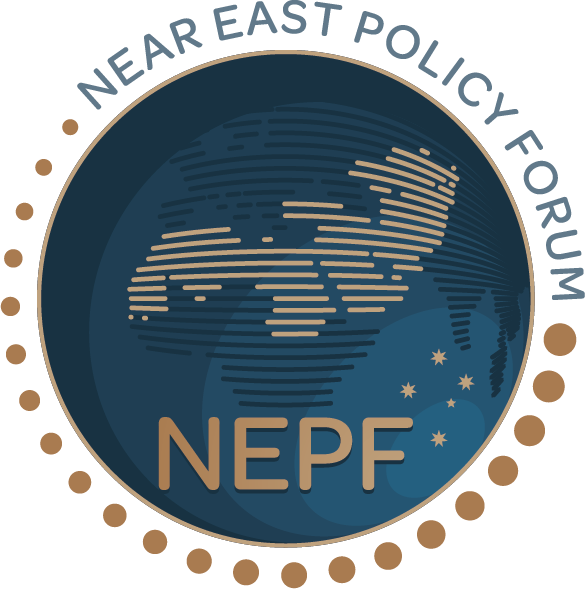Earlier this year, in a meeting with Israeli Prime Minister Benjamin Netanyahu, US President Donald Trump asserted the US would not only take over Gaza but transform it into what he described as the ‘Riviera of the Middle East’. His comments have been roundly criticised as tantamount to a violation of the Geneva convention, which forbids the mass forcible removal of a population and was met with swift refutation within the Arab world, including notably by Egypt and Jordan who have refused to accept any expelled Gazan population. Much media coverage has been devoted to political analysis of the proposed plan but the US President’s choice of language, in describing Gaza as a site of future transformation that the US will develop into a landscape of natural beauty, is significant to note. His words echo a long-standing practice of colonising powers utilising the symbolism of nature and the environment as a means of domination and control. Imagery of natural landscapes, such as Trump’s use of the word riviera, purposely seek to cultivate the ties that colonising powers have to a place but also to erase indigenous connections to that same space.
The much famed phrase ‘make the desert bloom’ has been advanced by Zionist settlers for decades and even found its articulation in EU President, Ursula von der Leyen’s congratulatory message on Israel’s 75th year of independence in 2023. This particular assertion regarding Israel’s apparent success in making the desert bloom has been rejected by multiple groups and Israel is accused of committing ecocide in Gaza. But, like Trump’s choice of language regarding his planned transformation of Gaza into the ‘Riviera’ of the Middle East, this phrase shares strong continuities with the language and imagery of specifically nature that has been utilised by colonising powers throughout history, including here in Australia by British colonial settlers.
A pivotal mechanism perpetuating Britain’s early colonisation of Australia was the depiction of visions of nature. From 1788 onwards, British painters (and increasingly thereafter photographers), depicted the landscapes of Australia (rather than its people) in a manner that explicitly justified colonial pastoral expansion of indigenous lands. Landscape works by artists such as John Glover, John Lewin and Elioth Gruner, rationalised the civilising narrative of Britain’s colonial project by presenting a presumed empty land that benefited from colonial settlement. These artworks also helped sustain new settler societies, who in Australia are colloquially referred to as ‘outback pioneers’, by cultivating a vision of nature that implicitly tied the settlers to the occupied land. The cultivation of a link between the settler and the land, through landscape artworks, crucially also sought to diminish indigenous connections that have endured for over 65,000 years. The significance of this British colonial vision for the natural landscape of Australia, cultivated through artworks, helped foster emerging agricultural and science industries and also a growing political sense of self for this supposedly young new country. The enduring colonial legacy of these works is evidence through their continued exhibition at Australia’s national galleries. When viewed through this prism, early Australian landscape artworks accord with Patrick Wolfe’s seminal work on settler colonialism that identifies how the intent of settler colonialism is to fuse together the colonisers and the land.
These historical examples of Britain’s colonisation of Australia, regarding the significance of depictions of the natural landscape, shares many similarities with colonial language and artwork of Palestine. Prominent settler advocate, Danielle Weiss, who leads the ‘Go Back to Gaza’ campaign routinely shares maps at her events that depict the Gazan landscape under settler occupation as lush and green – in stark contrast to the bland desert yellow used to denote the adjoining Sinai in Egypt. The Gush Katif Museum in Jerusalem, which examines the history of Jewish settlement in Gaza, features displays that contrast the Gazan landscape as dry, dusty and devoid of life under the Palestinians with that of imagery of lush life-giving hydro-botanical gardens to be developed under Israeli settler control. In a recent exhibition at Jerusalem’s Wolfson Museum of Jewish Art by serving IDF reservist and British-Israeli artist Sam Griffin, Gaza is depicted as a blurred, empty but aesthetically pleasing world. Like much of the colonial landscape artworks produced in Australia in the 1800s, all of Griffin’s works, which use a mixture of oil and watercolours, are devoid of people – the landscape is empty and seemingly awaiting in-habitation.
These examples of Israeli representation of the Gazan landscape echoes Trump’s recent words describing Gaza as a site of potential, yet to be developed and awaiting its transformation into the ‘Riviera’ of the Middle East’. In both instances, Palestine is presented as an empty space full of possibility pending its development by colonial settlers, even though Palestine, like Australia, was inhabited prior to colonisation by a people who still hold an incredibly strong connection to their land.
Trump’s words, in particular, carry great power in perpetuating a settler colonial narrative, but colonised spaces, including landscapes paintings, are always sites of contestation. Indeed, Jarrod Hore, in his newly published booked, Visions of Nature, which examines the use of imagery in British colonies around the Tasman Sea (including Australian and New Zealand) and in California, asserts that the very imagery of nature created by colonial powers reveals the unstable spatial foundations of settler identity. Bill Gammage argues a similar decolonial point as it relates to the early landscape paintings of Australia in highlighting that what is actually depicted is not pristine, despite almost never including Indigenous people. Indeed, although not their intention, Gammage argues these colonial artworks actually capture the careful and systematic management of the land by Indigenous people; a stewardship not recognised by the British who perceived Indigenous people as primitive. Similarly, the landscape works of Gaza by artists such as Griffin, do not depict an empty place but the homeland of the Palestinians. With Trump’s words garnering much media attention, it is worth remembering, that like the Indigenous people of Australia, the Palestinians of Gaza hold an enduring connection to their land; a connection that is not broken through its representation in either colonial artworks or in the colonial language of landscapes.




